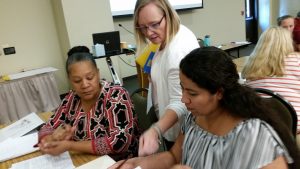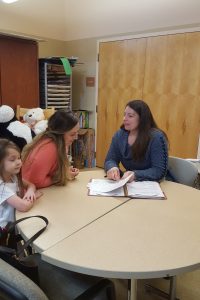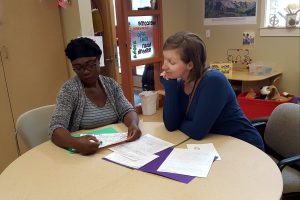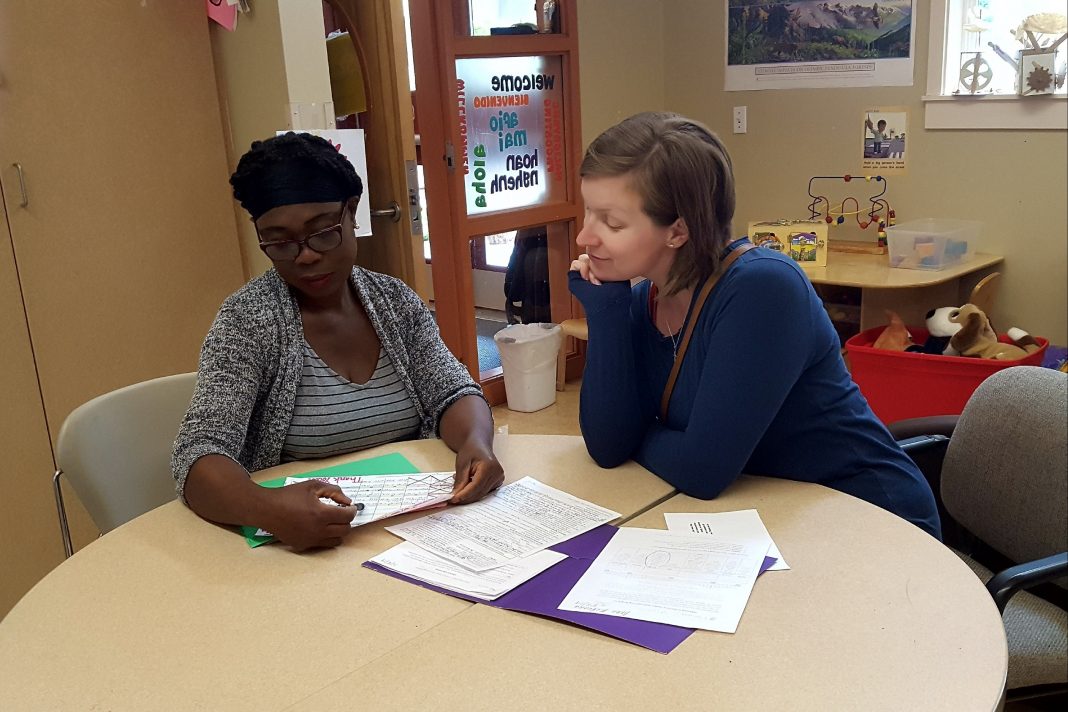For many, the path of upward mobility contains many steps, and there isn’t a clear road map on how to get there. Everyone’s needs are different, so the directions they must take are different too. Sound to Harbor Early Learning Programs are helping families travel those steps, assisting them with Mobility Mentoring, a program that will help them get to where they want to be.

Created by Economic Mobility Pathways (EMPath), the Mobility Mentoring program is designed to help families overcome the obstacles that prevent them from setting and achieving long-term goals. The Department of Family and Youth Services introduced the Mobility Mentoring to early childhood education districts across the state. For the past year, Linda Allen, family services parent educator, and Caitlyn Ishikawa, family community coordinator, have been implementing the program across Sound to Harbor’s service area, training family advocates to be mobility mentors, as well as collecting data, which helps them see the program as a whole.
Sound to Harbor’s Head Start and ECEAP programs, which are both preschool programs funded on the federal and state level respectively, take a holistic approach to early education. They involve families in the educational process and help the whole family to grow. “Yes, we’re a preschool program, but we are also there for the family,” says Caitlyn. “We are working to make sure the entire family succeeds and does well.”

Family visits, sometimes called home visits, take place in the family’s residence or in a Sound to Harbor center. At the beginning of the year families and home visitors work together to establish goals that will help them cross the bridge to self-reliance. “The bridge to child and family self-reliance is supported by five pillars,” explains Caitlyn, “family stability, well-being, financial management, education and training, and employment and career management.”
Later in the year, the mentors do a mid-year check-in. Sometimes, families find that they are able to achieve the goal early, and they set new goals at the mid-year check-in. And, at the end of the year, they do a final assessment to see the growth or changes that have happened over the year.
Linda and Caitlyn have noticed some major trends in the goals that families are setting within the program. When they compile all the data, using the statements made by families, they found that education and housing were the two greatest concerns for families.
“With families, we work with their strengths, and we work to help them fulfill a need or desire that they would like to set a goal around,” says Linda.
Families and mentors use the acronym S.M.A.R.T. when setting goals. Goals should be specific, measurable, achievable, relevant and time-bound. For instance, a goal such as “I want to get an education,” is a good start, but mentors will help the family fine tune the goal to something along the lines of, “I want to complete my GED by the end of the year and to do that, I will enroll in a 6-month course that will prepare me to take the test.”

Helping parents and guardians achieve their own educational goals is important, especially for preschool students. Parents and caregivers are children’s greatest role models. When parents display how important education is in their own lives, it makes a great impact on children, setting them up to be lifelong learners. Additionally, parents feel better equipped to support their children in school when they themselves have achieved higher levels of education. By improving outcomes for families, children have the opportunity to be more successful in school and life. “It’s an important part of our relationship with families,” says Linda.
Not all goals are education related. Some goals are as simple as preparing and eating a meal together once a week, as was the case with one family this year. “The plan they created entailed picking a day, deciding on the menu, going shopping together, and preparing the meal as a family,” says Caitlyn. This goal supports two of the five pillars, family stability and well-being, she explains.

In addition to helping families set goals, mentors help connect them with resources that will help them achieve their goals. Sometimes, that connection takes the form of helping the family find services. Other times, it is simply providing literature that fits with the family’s goal. Often, simply having the support of a mentor is enough to empower families with the confidence to achieve the small goals with ease, which, in turn, provides the motivation to set and pursue much larger goals.
The goal setting and accomplishments these families are making today, will go a long way to improve the long-term outcomes for their children in the future, and that is what Sound to Harbor Early Learning Programs are all about.
Want to know more about Sound to Harbor ECEAP and Head Start programs? Head over to the Sound To Harbor website to learn more.
Sponsored

















































